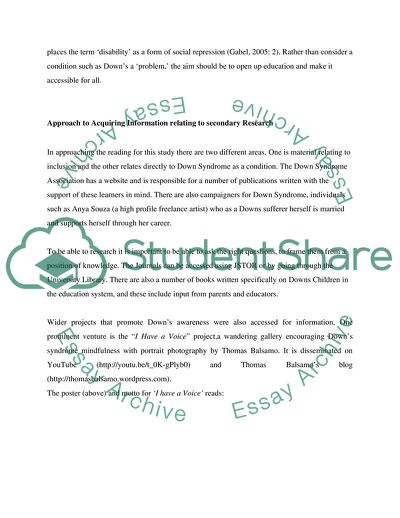Cite this document
(Integrating Down Syndrome Learners into Mainstream School Assignment Example | Topics and Well Written Essays - 3250 words - 1, n.d.)
Integrating Down Syndrome Learners into Mainstream School Assignment Example | Topics and Well Written Essays - 3250 words - 1. https://studentshare.org/education/1835527-research-proposal-and-development-of-a-primary-research-instrument
Integrating Down Syndrome Learners into Mainstream School Assignment Example | Topics and Well Written Essays - 3250 words - 1. https://studentshare.org/education/1835527-research-proposal-and-development-of-a-primary-research-instrument
(Integrating Down Syndrome Learners into Mainstream School Assignment Example | Topics and Well Written Essays - 3250 Words - 1)
Integrating Down Syndrome Learners into Mainstream School Assignment Example | Topics and Well Written Essays - 3250 Words - 1. https://studentshare.org/education/1835527-research-proposal-and-development-of-a-primary-research-instrument.
Integrating Down Syndrome Learners into Mainstream School Assignment Example | Topics and Well Written Essays - 3250 Words - 1. https://studentshare.org/education/1835527-research-proposal-and-development-of-a-primary-research-instrument.
“Integrating Down Syndrome Learners into Mainstream School Assignment Example | Topics and Well Written Essays - 3250 Words - 1”. https://studentshare.org/education/1835527-research-proposal-and-development-of-a-primary-research-instrument.


